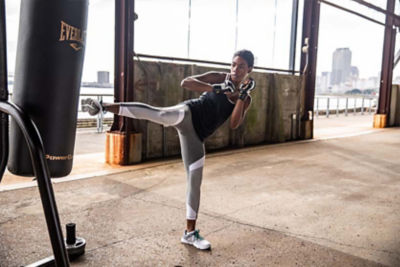12 Beginner Yoga Poses
New to the studio? Learn what to expect at your first yoga class with this Pro Tips guide.

A centuries-old physical and mental discipline, yoga has become one of today’s most popular fitness routines. It’s practitioners – called yogis – take part in a wide variety of practices around the world.
Yoga is a great pastime for those looking for a way to increase flexibility, muscle tone and endurance. Many also laud its ability to help them relax and relieve stress. Best of all, yoga can be adapted to any lifestyle or skill level. This yoga 101 guide answers all your pressing questions about how to get started with yoga.
WHAT DO I NEED FOR YOGA?
Being prepared for your class can make the experience more comfortable and rewarding. There are a few things you need to get started.
YOGA APPAREL
Yoga clothes should be soft, lightweight and breathable. Wear bottoms with stretchable fabric and tops that do not restrict your upper body. The style of yoga you practice may influence your wardrobe choices. Your apparel should offer a lot of room to stretch. You can never go wrong with yoga pants. However, if your class is in a room with a high temperature, you may opt for studio shorts or capri-length leggings.
You may go barefoot in class, but some will require grip socks. Not sure what type of sports bra would work best? Check out this Pro Tips guide on how to choose a sports bra for your activity.
YOGA GEAR
Some studios will have yoga mats for beginners to use, but most require you to bring your own. Yoga mats provide cushioning and grip during practice. They come in a variety of textures, materials and thicknesses that you can choose from. Make sure you also bring gym bag essentials like a water bottle and yoga towel.
Some advanced classes will also use weighted bars, foam blocks and straps. A yoga block can help enhance your practice from home as well.
WHAT TYPES OF YOGA ARE THERE?
There’s a different type of yoga practice for just about everyone, with hundreds of methods practiced across the globe. Hatha yoga is especially great for beginners. It is a basic form of yoga that can be customized to all skill levels to help develop long, lean muscles. Anusara yoga is another style that’s great for those just getting started. Students are encouraged to express themselves through their poses.
Hot yoga takes place in sauna-like conditions to get your body sweating. The idea is to replicate the humidity of India, where yoga originated.
There are also some alternative types of yoga that offer fun ways to mix up your routine.
WHAT CAN I EXPECT IN A YOGA CLASS?
When beginning any new studio class, you should aim to arrive 15 minutes early. This way you can get to know the instructor and the facilities. Once class begins, you will warm up with some gentle breathing. In beginner classes, you will learn basic poses and techniques.
Some instructors will observe your poses and adjust your alignment as needed. If you have any injuries or concerns, consult your instructor ahead of time. This will help your instructor to offer variations for positions as needed.
Keep in mind, teaching methods and practices can vary between studios and instructors.
ARE THERE ANY TERMS I SHOULD KNOW?
You may hear a few words in class that might be unfamiliar to you as a newcomer. Here is a list of some common yoga terms to help you stay at the head of the class.
- Asana: An asana refers to the physical postures or poses performed in yoga.
- Pranayama: These are the breathing techniques done throughout practice.
- Chakra: Chakras refer to the “energy centers” in your body. There are seven chakras: the spine, lower abdomen, upper abdomen, heart, throat, center of the forehead and the crown of the head.
- Mantra: A mantra is a repeated word, sound or phrase that can help increase your concentration.
- Om: An elemental chant that can help to center and focus your mind.
- Savasana: Known as the “corpse pose,” savasana is typically done at the end of class as a restorative pose.
- Namaste: Namaste is a salutation commonly said at the end of class.
CAN I PRACTICE YOGA AT HOME?
For many yogis, practicing at home is especially gratifying. It’s comfortable, convenient and personal. However, it’s recommended that you attend a class or two to hone your posture and alignment before beginning your at-home training.
Once you’ve mastered the fundamentals, unroll your mat and begin to develop your own sense of rhythm. You can always turn to a yoga DVD or other online instructional videos for some inspiration.
Now that you know the fundamentals of yoga, you can start learning some basic yoga poses with these 12 yoga poses for beginners.








